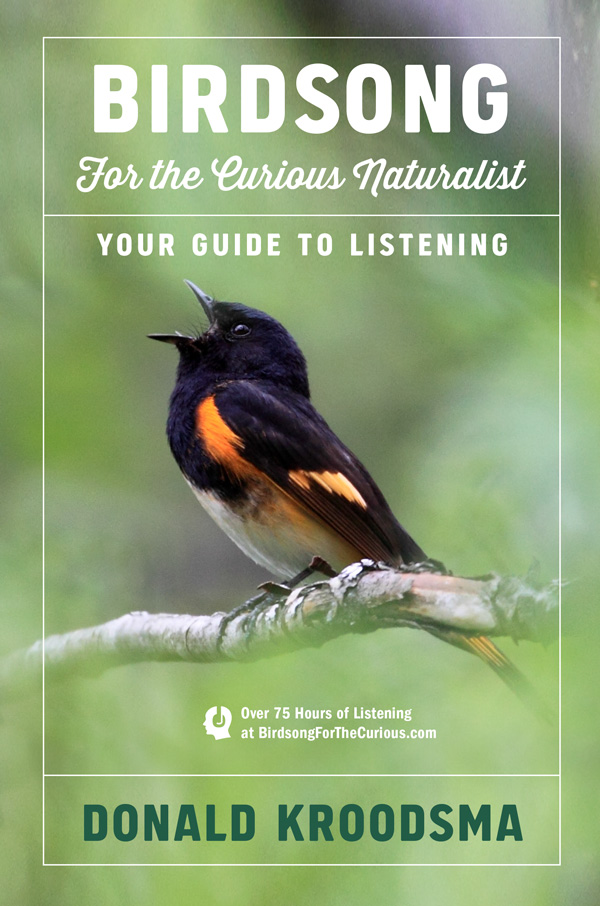Rufous-crowned sparrow
Chapter 10: More birds! More Sounds!
Subchapter: More birds! More Sounds!—Americas
From page 169 in the book.
One of my greatest joys in listening to birds is to tag along with a singing bird during the first hour of his day, through the dawn chorus. I learn a few of his habits and understand a little of his life, and sometimes try to imagine being the bird, wondering what it is like. So how could I not share with you this 55-minute dawn experience with a rufous-crowned sparrow? He calls, he sings, he transitions from immediate to eventual variety . . . It was a mighty fine dawn hour, beginning with a chuck-will's-widow.
♫703. Here's the best segment from the entire 55-minute dawn recording (♫704, below), almost five minutes of superb, close singing by this sparrow. I love his repeated notes between the songs, four or five descending dear notes; at one point he calls 17 times in six seconds (beginning at 2:11). Like the dawn singing of so many other songbirds, songs are not enough, and an extra enthusiasm is conveyed by filling time between songs with calls.
I wonder how many different songs he sings in these few minutes? I check out the first eight songs and find two different ones, in the pattern A B A B B A B A. I skip to the last eight songs and find two others, in the pattern M N N M N M N N (letters chosen somewhat at random). What did he sing in the 38 songs during the intervening three and a half minutes? April 20, 2013. Chaparral Wildlife Management Area, Artesia Wells, Texas. (4:47)
♫704. The excerpt above is from 20:18 to 25:06 in this 55-minute recording, beginning when the chuck-will's-widow was still singing, before the sparrow had begun his day. This is a typical early morning recording, with me trying to follow a bird as he moves about his territory; under these conditions, sometimes I'm close to the bird, sometimes more distant, so the quality of the recording varies.
Curiosity getting the best of me, I skip ahead to one of the last good minutes of the recording, from 47:40 to 48:40. Wow, the singing pattern in these ten songs is X X X X X X X X X X. He's repeating now, and it's still another song, the fifth kind. What's more, he's no longer calling between songs. My best guess is that, like some other sparrows, he energetically calls and alternates different songs during the dawn chorus, but as he eases out of the chorus and into the day, he begins to repeat more and he also drops the intense calling between songs. I'd love to know what he does throughout this longer recording, with both songs and calls, but I'm going to leave that to someone else to enjoy. Maybe I'll get a report back from some curious naturalist who pursued this project. I would enjoy that.
6:18 to 7:13 a.m.; sunrise at 7:07 a.m. April 20, 2013. Chaparral Wildlife Management Area, Artesia Wells, Texas. (55:00)
